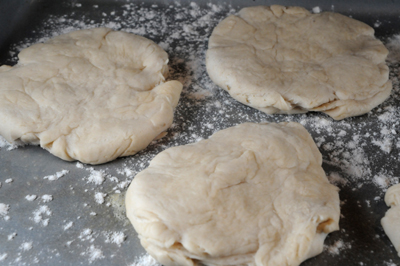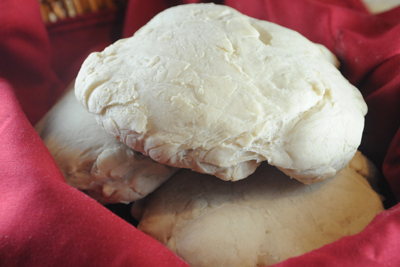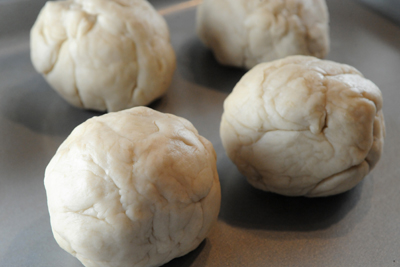Anyway I don't have that guy's number any more, and none of the goat farms around here are selling goat meat (at least not that I could find anyway), and Corti Brothers in Sacramento can only sell them by the half (and since I've never actually eaten goat before I don't know if I really want to make that kind of investment, and besides I don't have room in my freezer for that much goat anyway). So I had to not make the stewed goat meat from Curacao, even though I was dying to try it.
Before I tell you what I did settle on, first a little bit about Curacao. Curacao is, you guessed it, an island nation in the southern Caribbean sea, just off the coast of Venezuela. It is one of approximately 7 billion Caribbean nations, which is odd since there are only about 196 countries in the world. Oh sorry, I guess there are only 28 Caribbean nations. It really does seem like 7 billion, though.
Curacao was actually a territory until quite recently, when the Netherlands Antilles was dissolved in October of 2010. Like many Caribbean nations, its history is tainted by the slave trade—in the 17th and 18th centuries it was a sort of base for distributing slaves: Dutch merchants brought slaves to the island under a contract with Spain, and then from there sold them to various other places in the Caribbean and in South America. Today, however, it has one of the highest standards of living in the Caribbean, with much of its economic prosperity rising from the tourism industry. Curacao has beautiful beaches, caves boasting 1,500 year old cave drawings and coral reefs that attract scuba divers from all over the world.
 |
| Willemstad, Curacao. Photo Credit: Jessica Bee via Compfight cc |
The cuisine in Curacao is called Kriyoyo and is similar to other Caribbean nations, with some Latin American influences thrown in. Stews are popular, and goat meat is a common ingredient. But alas, as you've already heard, I could not find any goat meat so I chose this dish instead:
Karni Stoba (Beef Stew with Green Papaya)
(This traditional recipe was featured on the British website "Good Food Channel")
- 1 lb stewing beef, cut into 1-inch pieces
- pinch of nutmeg
- 1 tsp cumin
- Salt and pepper to taste
- 1 tbsp soy sauce
- 4 tbsp vegetable oil
- 2 onions, finely chopped
- 1 green pepper, diced
- 2 cloves garlic, chopped
- 1 large tomato, roughly chopped
- Hot water to cover
- 1 large potato, peeled and cubed
- 1 lb green papaya, peeled, seeded and cut into 1-inch pieces
- 1 tbsp tomato paste
Tutu
(from the Curacao Tourist Board)
- 1 lb black-eyed peas, dried
- 6 cups water
- 2 garlic cloves, chopped
- 1 tsp salt
- 3/4 cup sugar
- 1 cup coconut milk
- 1 3/4 cup yellow corn meal
- 2 tbsp butter
Pan Sera (Hard Bread)(also from the Curacao Tourist Board)
- 1 2/3 tsp active dry yeast
- 4 cups flour
- 2 tsp sugar
- 1 1/2 tsp salt
- 1/3 cup + 1 tbsp shortening
- 1 cup water
Starting with the stew:
First season the meat pieces with the nutmeg, cumin and salt and pepper. Add the soy sauce.
Now heat the oil over a hot flame and brown the meat on all sides.
Add the onion, pepper, garlic and tomato. Add enough hot water to cover and bring to a boil, then reduce heat and cover. Simmer for an hour or so, or until the meat is tender and the sauce is pretty thick.
Meanwhile, boil the potato until just fork-tender. Drain and set aside. Steam the papaya pieces for about 15 minutes, or until soft (I just used my electric steamer).
When the meat is ready, add the potato, papaya and the tomato paste. Cook for another five or 10 minutes or until heated through. Serve over steamed white rice.
Now the tutu:
Soak the black-eyed peas for 2 hours, then drain and add to a pot with the water and garlic. Bring to a boil over a medium flame, adding more water as necessary until the peas are tender.
Add the salt, sugar and coconut milk and continue to cook for 10 minutes or so. Now gradually add the cornmeal (you may need to put in a little more water to make it the right consistency). Keep stirring until the cornmeal is done and is roughly the same texture as polenta (this should take 20 minutes or so). Add the butter and stir until well-incorporated.
Now put the tutu on a plate and smoosh it with another plate. Seriously. You should have a flat pizza-like object when you are finished. You may need to put a little bit of water on the plates to keep the tutu from sticking.
OK, and now for the bread.
Sift together the flour, sugar and salt. Now add the shortening and knead for 20 minutes.
Yes, you're right. It's ridiculous. No amount of kneading will turn this mixture into an actual dough. So one of two things has happened here—either I royally screwed up my calculations when I attempted to scale this recipe down (and I did redo them, just in case, though it is highly likely I screwed it up the second time too, because I am that bad at math). Or there is a key ingredient missing from the original recipe.
So I figured I could do one of two things: 1) add more shortening, which would hopefully make this bowl of soft crumbs turn into something workable or 2) add water. Now, I reasoned that it was more likely they forgot to include an ingredient than it was that they got an ingredient wrong (supposing the problem wasn't actually me), so I decided to add some water. I often see recipes that don't include water in the ingredient list, even though the recipe calls for it, so I decided that was my best option. Of course, my result wasn't actually hard, as in "hard bread." Not at all, so it's possible I may have been wrong. But I'm still going to use my version in this entry, until someone tells me otherwise.
OK so add the water, then knead for 20 minutes. Divide the dough up so that each piece weighs roughly 7 ounces. Roll into balls and then cover with a towel and let rise in a warm place for 10 minutes.
Now flatten each ball with your hand and score the tops with a knife or fork.
 |
| Yeah, I forgot to score them. But they were so screwed up at this point I'm not sure how much it mattered. |
Grease a baking sheet and sprinkle with flour. Transfer the breads to the baking sheet and bake at 250 degrees until done (this is a pretty low temp, so it might take a while). My breads didn't have very good color, so I would also recommend brushing the tops with oil so they have that lovely golden bread color.
 |
| Mine had no color. I would definitely brush with egg wash or butter if I made these again. |
(Another note: the original recipe says to check for doneness with a toothpick, which is something I've never before seen in a bread recipe. This gives me yet more suspicion that I didn't do the whole pan sera thing correctly, but at this point I think I just have to let it go.)
OK the verdict: Martin liked the tutu, which makes one of him. I thought it was too sweet and even with the addition of the black-eyed peas was still way too much like polenta, which I don't usually like anyway. The kids were frightened by it so they just left it alone. I did like the stew, though. The papaya cooked up a lot like a vegetable and wasn't terribly sweet, so it added an extra layer of interest to the dish. Martin liked the stew a lot though I forgot to put the leftovers in the fridge before I went to bed so they tragically had to be washed down the garbage disposal the next morning. The bread was good though not terribly unusual, and I really wish I knew how close it came to the real thing. Probably not very. But it was, of course, pretty much the only thing my kids would touch since they never met a bread they didn't like and are also not terribly adventurous when it comes to food, which is ironic since I have another five years of these weekly meals left to finish.
So there you have it, Curacao sans-goat. I hope you all had a wonderful holiday and I hope you have a fun and safe New Year.
Next week: Cyprus
For printable versions of this week's recipes:



















Tragic indeed! You really needn't have thrown it out. Many places leave the food overnight anyway to cool, and then refrigerate in the morning. This is actually a very common practice in the UK, and in France. Unless you have a swamp for a kitchen, you should be fine.
ReplyDeleteYou know, I've always thought that all those FDA food safety recommendations were probably more CYA than anything. I tend to be a lot more paranoid now that I have kids. I remember in my pre-kid life leaving out a huge pot of chili overnight and then freezing it and eating it. We didn't die. :)
ReplyDelete